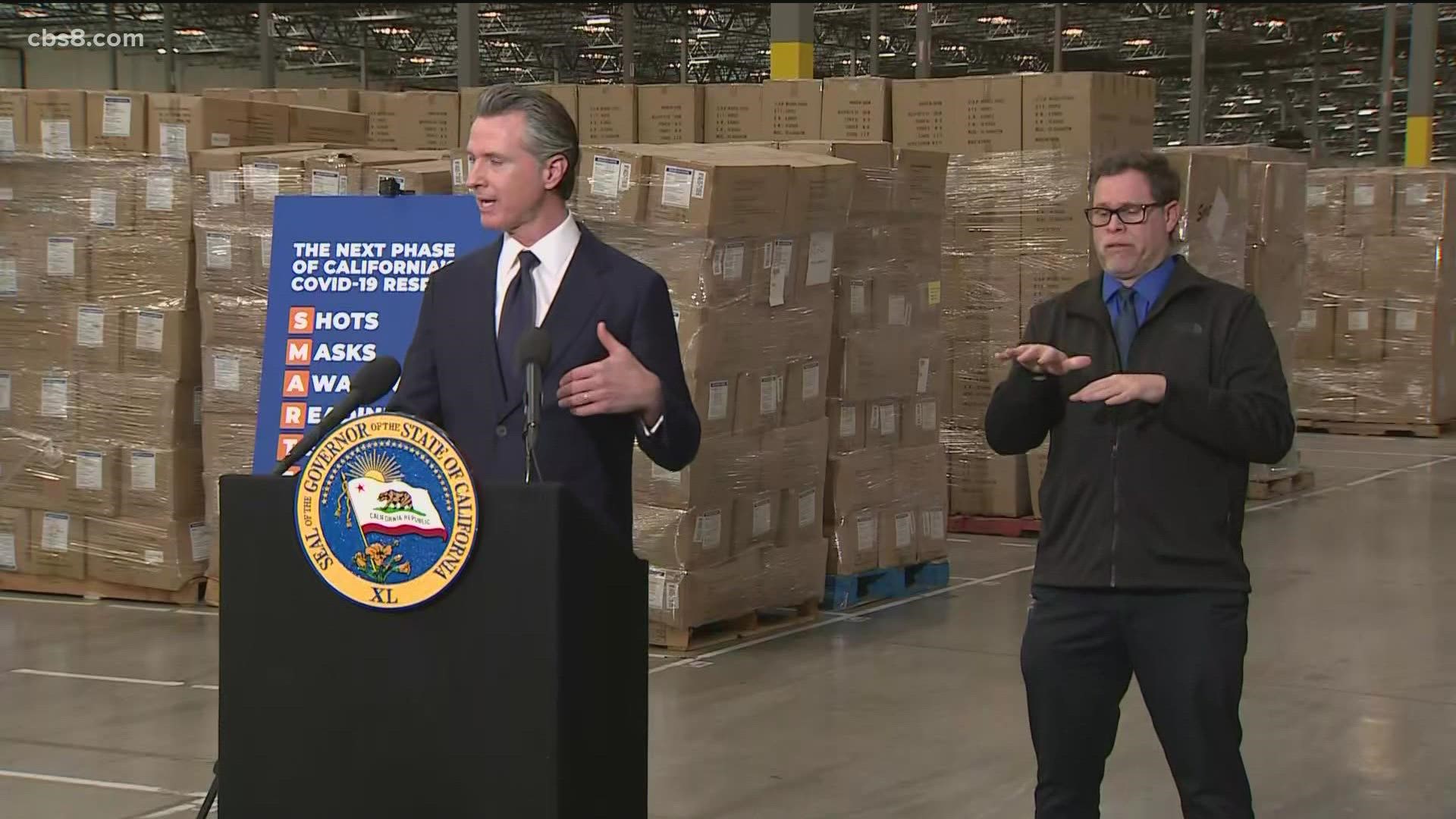SACRAMENTO COUNTY, Calif. — California officials unveiled a plan for coexisting with the coronavirus, which scientists say is likely to be around for the foreseeable future. The approach announced Thursday afternoon presumes that the most populous state is entering an endemic stage, where the virus still exists in a community but becomes manageable as immunity builds.
"There is no end date," Newsom said during the afternoon briefing to roll out the new SMARTER plan.
"I think people are looking forward to turning the page," Newsom added.
"People are desperate to move past this crisis mode of the past few years to get back to whatever semblance of normalcy they vaguely remember."
The move comes a day after California lifted its latest indoor masking mandate. California’s health secretary, Dr. Mark Ghaly, says the focus is on being prepared and being ready.
"Parents should not hear that we aren't making a move," Ghaly said, insisting the state is only "taking a little more time" to ensure pandemic metrics continue on a downward path.
Ghaly said a lifting of the mandate is inevitable, saying it is just "a question of when." He expressed confidence that the mandate would be lifted after a Feb. 28 reassessment, barring another sudden spike in virus infection rates and hospitalizations.
Ghaly noted that even when the state lifts its requirement for masks in schools, individual counties or school districts could still require them.
On a call Thursday afternoon Ghaly announced the state's SMARTER plan for California's next phase of fighting COVID-19.
SMARTER stands for:
- Shots- Vaccines are the most powerful weapon against hospitalization and serious illness
- Masks- Properly worn masks with good filtration help slow the spread of COVID-19 or other respiratory viruses
- Awareness- We will continue to stay aware of how COVID-19 is spreading, evolving variants, communicate clearly how people should protect themselves, and coordinate our state and local government response
- Readiness- COVID-19 isn't going away and we need to be ready with tools, resources and supplies we will need to quickly respond and keep public health and the health care system well prepared
- Testing- Getting the right types of tests - PCR or Antigen - to where they are needed most. Testing will help California minimize the spread of COVID-19
- Education- California will continue to work to keep schools open and children safely in classrooms for in-person instruction
- Rx- Evolving and improving treatments will become increasingly available and critical as a tool to save lives
"This is a shift to say, it is time to think about this differently," San Diego County Board of Supervisors Chair Nathan Fletcher told CBS 8.
Fletcher cautioned that, as we move out of 'crisis mode,' Californians will still remain vigilant and prepared for any future surge in cases: for example, during winter time.
"Nothing is going to close, we are not going to have to shut anything down, but we want to have testing available," Fletcher added. "We don't want to have people waiting in five hour lines for tests when that happens."
To that end, this new plan includes benchmarks like stockpiling at least 75 million masks, as well as the capacity to perform at least 500,000 tests and administer 200,000 vaccines per day.
One thing that isn't changing, at least for now, is the 'state of emergency' that California is under in regards to Covid-19.
"I think a lot of people fixate on that, even though there is nothing that is impacting their daily life at all," Fletcher said.
Declaring a state of emergency is a mechanism is that is essential to allowing the state and county to receive and distribute federal funds and other resources, commonly used in natural disasters.
"You'll have an earthquake or wildfire, and the fire will be out, the earth will have quit shaking. but in order to get proper federal reimbursements and re-build, that will continue," Fletcher added.
Senate President pro Tempore Toni G. Atkins (D-San Diego) also released the following statement on a Senate hearing being set to debate the merits of a resolution to end California’s state of emergency:
“This week, SCR 5 by Senator Melendez was set for the first Senate Governmental Organization Committee hearing of the year on March 15. The Committee will debate the merits of the resolution and the implications it will have on California’s ability to respond to the COVID emergency. I understand we are all tired of living life in an emergency, but ending the emergency must be done responsibly to ensure there are no unintended consequences so we can continue to meet the need of our state’s residents in an unpredictable future.
“In addition to the Pandemic State of Emergency, California has dozens of open state of emergencies related to drought, wildfires, and other natural disasters where recovery and clean up continue. A majority of these emergency declarations have been active for years and remain in place to ensure that communities can recover and needed federal funding is provided to assist in the clean-up and relief efforts. Under the current pandemic emergency declaration, there are a number of active executive orders that allow the state to quickly purchase and distribute COVID test kits to schools, administer vaccines, provide test results, and keep our workplace protocols in line with public health orders. Additional information on the hearing will be made available through the committee.”
WATCH: 'There is no end date' | Gov. Newsom announces California's shift to 'endemic' approach to COVID
Watch Related: California shifts to "endemic" COVID-19 strategy | Rynor Report (Feb 17, 2022)

